Sustainable cities: utopia or reality
As humans continue to evolve, so too do our cities. Today, with more than 50% of the world’s population living in cities, our success or failure in building sustainable cities will shape the future of the Homo Urbanus. Both developed and developing world cities are still struggling to get urban development right.
Managing urban areas has become one of the most important development challenges of our century. Arcosanti, a so-called futuristic city situated deep in the United States’ Arizona desert, was built with the idea that urban spaces should reflect both human aspirations and the needs of the environment. MO* went there to understand the challenges and benefits of juggling with alternative urban experiments.
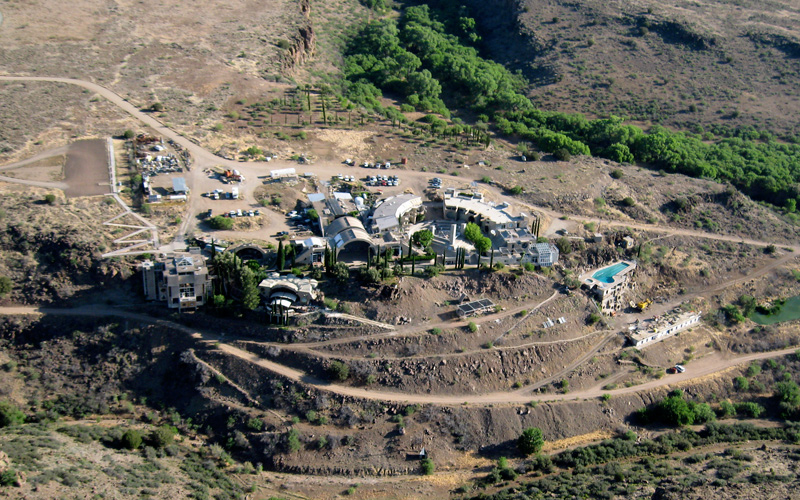
Arial view of Arcosanti, a so-called futuristic city situated deep in the Arizona desert. (© Costanti Foundation)
Follow an unbeaten road in the middle of the Arizona desert, 113 kilometers north of Phoenix, and you will find what looks like an agglomeration of futuristic constructions. Forget about high-speed trains and mile-high buildings. This ‘urban laboratory’ was established to address some of the biggest dilemmas facing governments, urban planners, and ordinary citizens today.
Arcosanti was built to take on the task of accommodating booming populations in a sustainable environment. This microcosm is the brainchild of visionary architect Paolo Soleri. What he had in mind was a city which could host a community, planned for 5,000, but which currently numbers just over 60. In a ‘back to the future’ paradox, what could have been a global example of future eco-city resembles more a metropolis of the past. What went wrong?
Implosion rather than explosion
‘The problem I am confronting is the present design of cities only a few stories high, stretching outward in unwieldy sprawl for miles. As a result of their sprawl, they literally transform the earth, turn farms into parking lots and waste enormous amounts of time and energy transporting people, goods and services over their expanses. My proposition is urban implosion rather than explosion,’ said Soleri.
The idea behind Arcosanti was that cities could be built embodying the co-presence of architecture and ecology. This vision materialized in the 1970s when armed with revolutionary ideas and joined by hundreds of volunteers, Soleri started building an alternative urban form opposed to the dominant suburban sprawl. The architect’s dream was to establish a sustainable city where people and resources could circulate efficiently.
‘Cities are the most important technology we have as humans. How we live together and interact with the space builds our identity,’ explained architect Antonio Frangiacomo who has been supporting the development of Arcosanti for the past 15 years.

Working with pottery at one of Arcosanti’s renaissance-inspired buildings. (© Bibbi Abruzzini)
Living, working and public spaces would be within easy reach of each other in Arcosanti, therefore walking becomes the main form of transportation within the city. Buildings would be multi-use and ‘green’ - equipped with solar lighting, heating and cooling. Soleri’s chimera went against wasteful consumption of resources and the tendency of isolating people from each other.
It was more than just architecture; it was a social experiment. The miniaturization of the physical environment of the city was meant to change the relationship people had with their space and community.
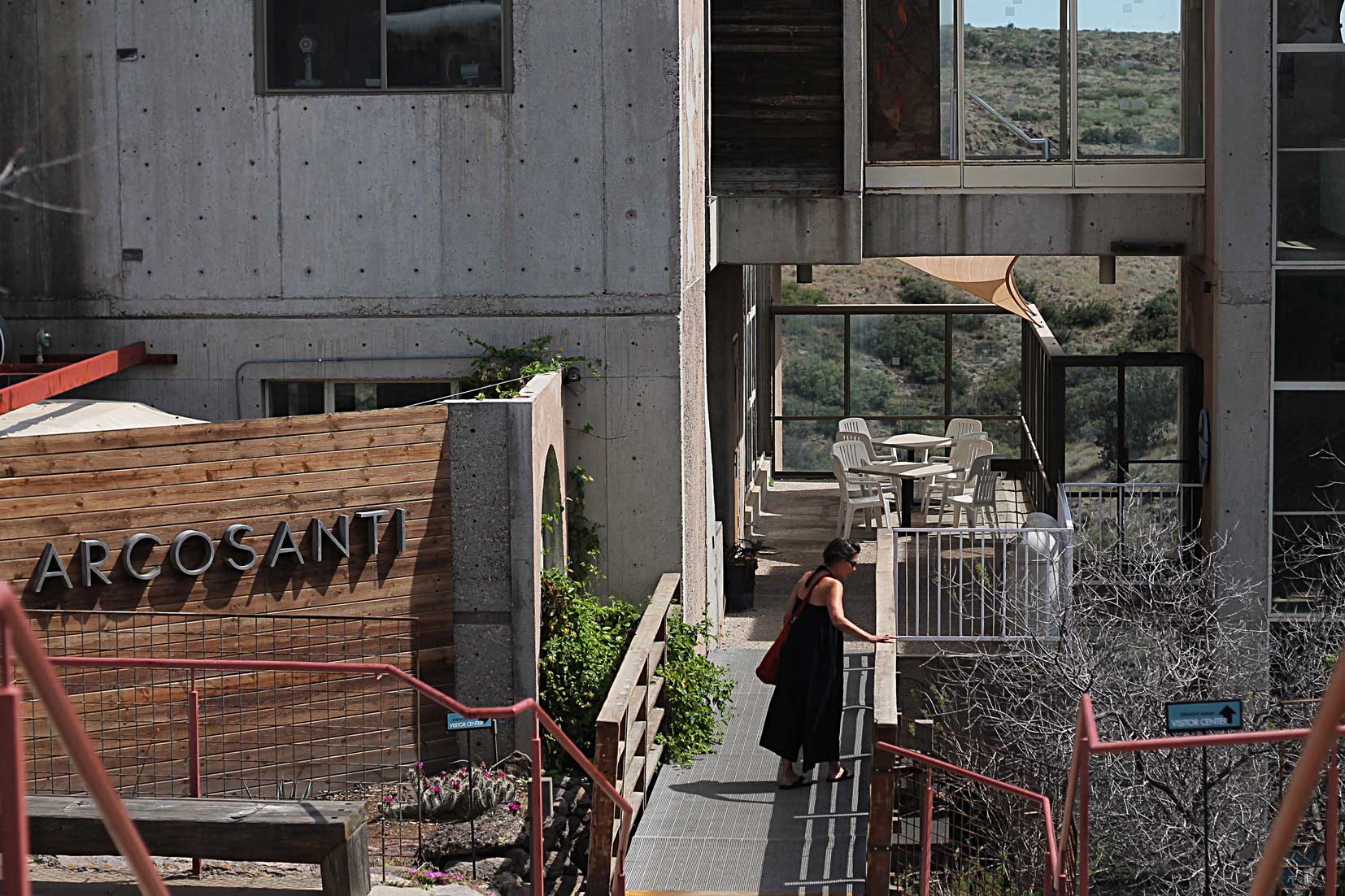
The entrance to Arcosanti’s main building. (© Bibbi Abruzzini)
Basically, Soleri saw the city as ‘the necessary instrument for the evolution of humankind’. Through Arcosanti he believed he would be capable of demonstrating a positive response to the many problems of urban civilization, those of population, pollution, energy and natural resource depletion, food scarcity, and quality of life.
in reality Arcosanti has become essentially a museum. Not a city.
All this sounds wonderful but in reality Arcosanti has become essentially a museum. Not a city. It is a place you would live for a couple of weeks, maybe a month, but not your whole life. The lack of funding and public participation also means that the space is chronically a construction site.
Arconauts break barriers
Over the course of Arcosanti’s 40 years, about 7,000 residents have come and gone. About 25,000 visitors stop there each year. But very few stay.
‘There is a sort of hierarchy. People of the administration who have lived here longer usually live in larger spaces,’ Melissa, who has been living at Arcosanti for the past 18 months, said. She explained that at the moment there are only a couple of family with kids, most of the inhabitants are students or architects that are interested in replicating some of Soleri’s ideas abroad.
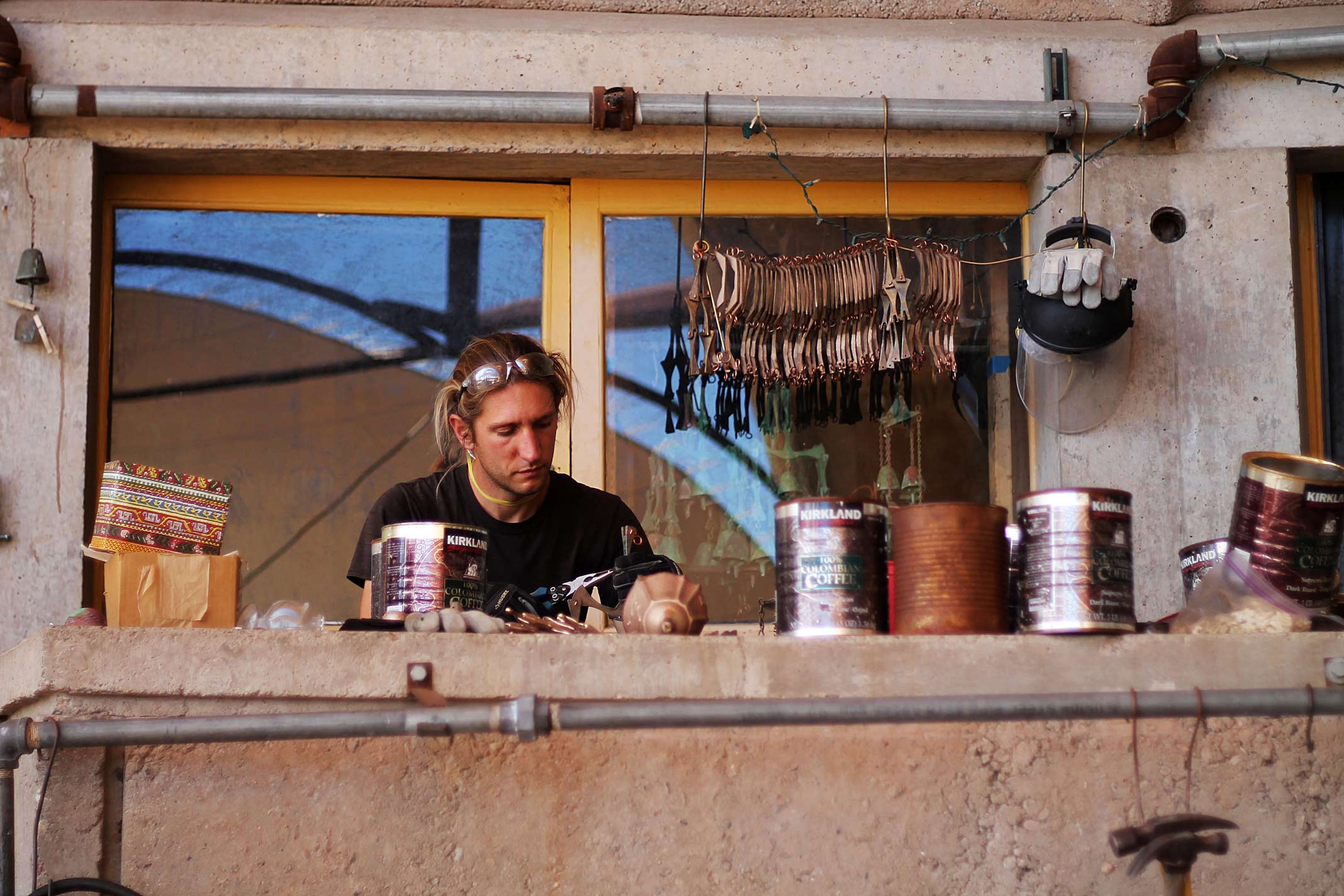
Arconauts, as residents are called, spend most of their time working in the foundry to make bells - which are the primary source of sustainment for the city. (© Bibbi Abruzzini)
Arconauts, as residents are called, spend most of their time working in the foundry to make bells - which isthe primary source of sustainment for the city. Functioning similarly to an Agora in ancient Greece, occupants usually meet in the Vaults, at the heart of the complex, to discuss day-to-day operations as well as urgent matters. Everyone shares responsibilities and must abide to a sort of social contract virtually signed with the rest of the populace.
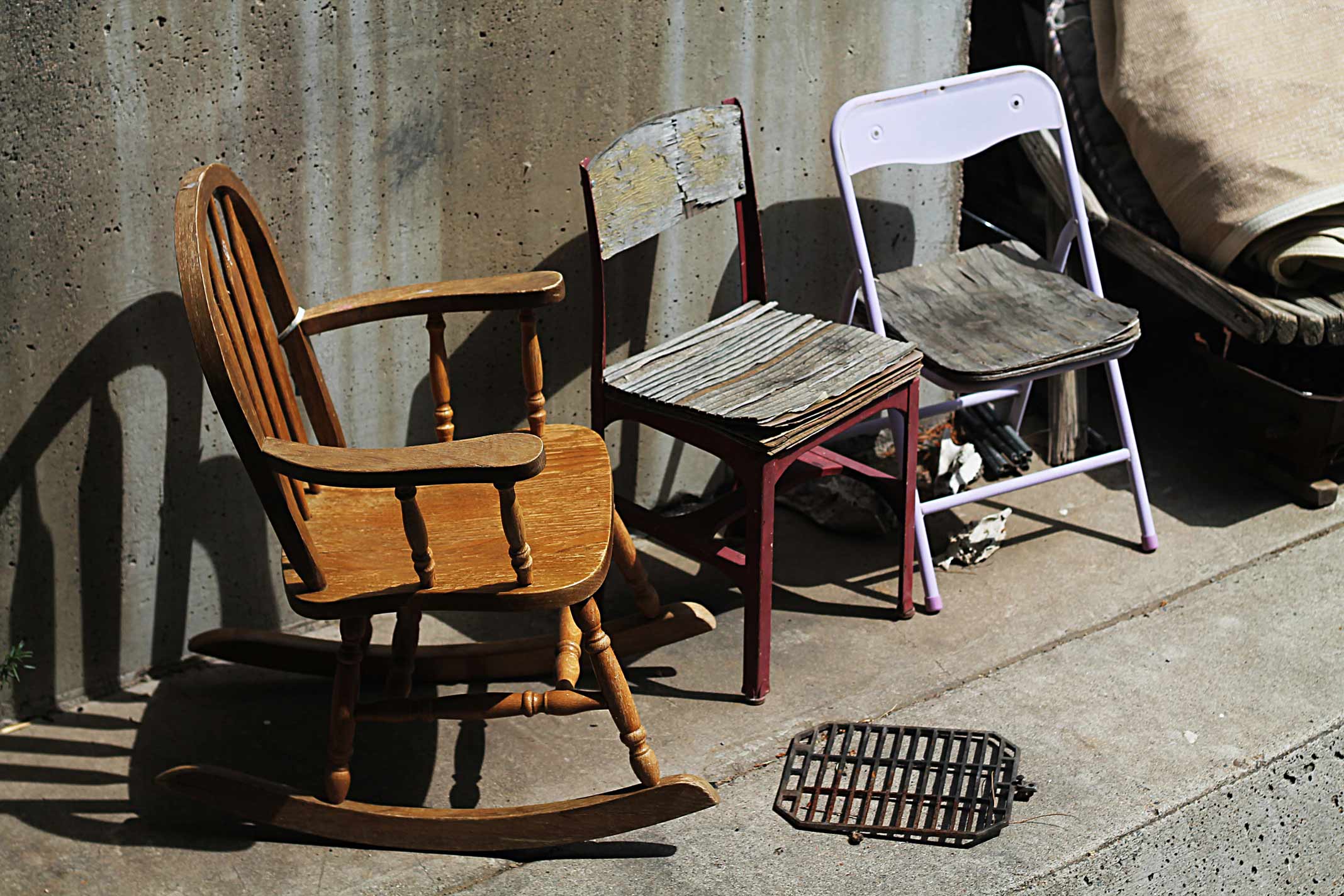
Cruz: ‘There is a definite social aspect to this urban laboratory.’ (© Bibbi Abruzzini)
‘Communities are increasingly structured alienated from each other. How many people don’t know who their neighbors are although they live right next door? We create pockets and little bubbles for ourselves instead of breaking barriers,’ said Hildemar Cruz, PR coordinator at Arcosanti. ‘Here, we live and we work in the same environment. There is a definite social aspect to this urban laboratory.’
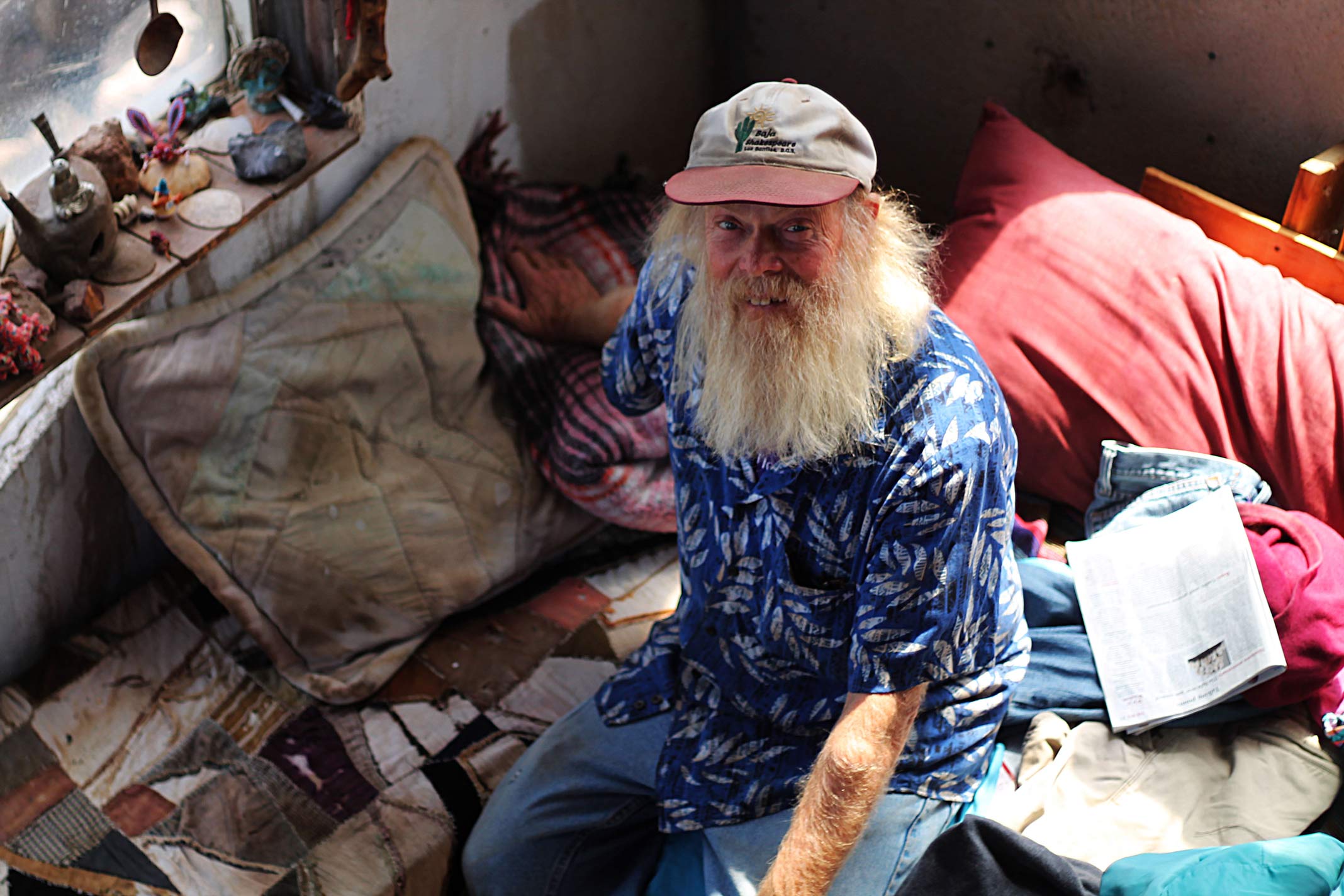
Mike, the electrician and one of the Arcosanti’s residents, in his room. (© Bibbi Abruzzini)
Decisions, however, take time to be implemented as Mike, who works as an electrician, explained. He lives at Arcosanti for half of the year. As a resident he pays just €140 a month for room and board. ‘I have been proposing to install a solar-powered heating system for our swimming pool for years now,’ he said.
Little slice of a big pizza
‘I believe that we can introduce a greener aspect to our urban spaces. But that’s maybe idealistic.’
Architect Solari wanted to ensure an immediate access to rural space allowing agriculture to be situated near the city. This would have provided city dwellers with a VIP entrée to nature. ‘Using and protect the landscape instead of tearing it to pieces,’ Frangiacomo explained.
In ideal terms, it would have boosted the efficiency of food distribution systems and allowed the city to be self-sufficient. ‘If you go to a dense urban area you will have artificial open spaces but is this sufficient to satisfy people’s need of nature?,’ Cruz asked. ‘I believe that we can introduce a greener aspect to our urban spaces. But that’s maybe idealistic.’
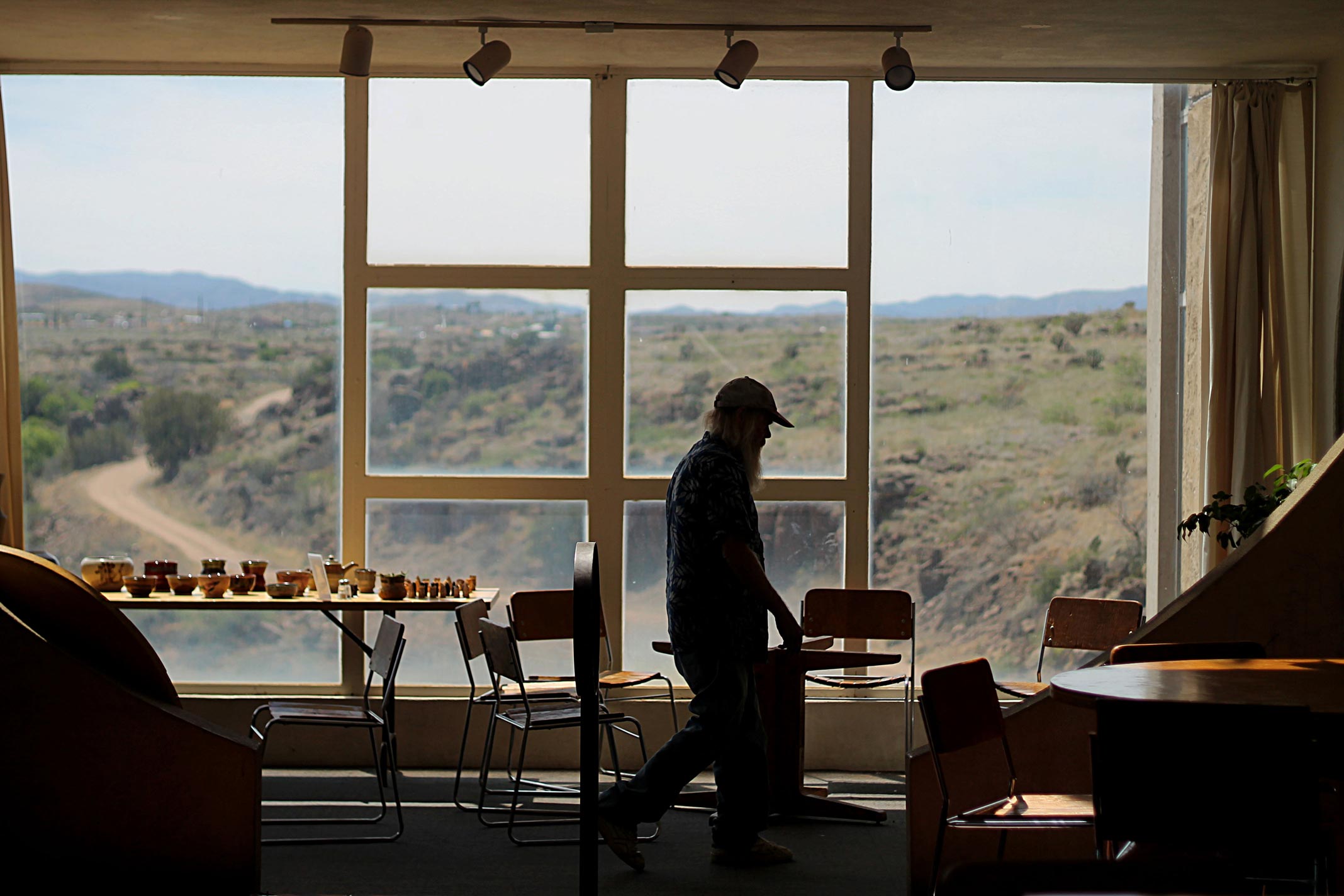
Arcosanti’s cafeteria. (© Bibbi Abruzzini)
Manpower is needed to bring such positive propositions to the next level. But with less than 60 inhabitants, the objective of reviewing the grammar of cities by proposing an alternative paradigm for the 21st century did not fully materialize.
‘We are going to smash our nose somewhere. And this is going to happen soon.’
Yet, motivated young volunteers continue to come here from all over the world, paying around €900 each to enroll in construction workshops and be part of this urban project. A few of them decide to stay, taking one of the few jobs available on site.
‘This laboratory is supposed to serve as an example; it’s something different from what you see around you. But as Soleri used to say, it is just a little slice of a big pizza,’ Frangiacomo said, while eating his €9 lunch ordered at the cafe’s menu. He then warned: ‘Call it social instability, cultural clash, environmental crisis. We are going to smash our nose somewhere. And this is going to happen soon.’
For Soleri getting to successful urban development patterns also meant ending the love affair with cars; a luxury that many - notably in the US - are not ready to give up. Nations turned to the automobile as an instrument of increased freedom and opportunity. But several problems have emerged at least partially caused or sustained by urban vehicles. The road to Arcosanti, despite being paved with good intensions, is still under construction.
As historian Spiro Kostof says, the city is a ‘process’. Buildings rise and fall, urban spaces expand. Unfortunately, with an operating budget of less than€1 million, Arcosanti is mummified. It lacks adequate funding to grow. The annual sum is about a 10th of what the community needs to build new infrastructures to attract new residents and businesses. Turning a somewhat derelict complex into something more like a city is no easy feat.
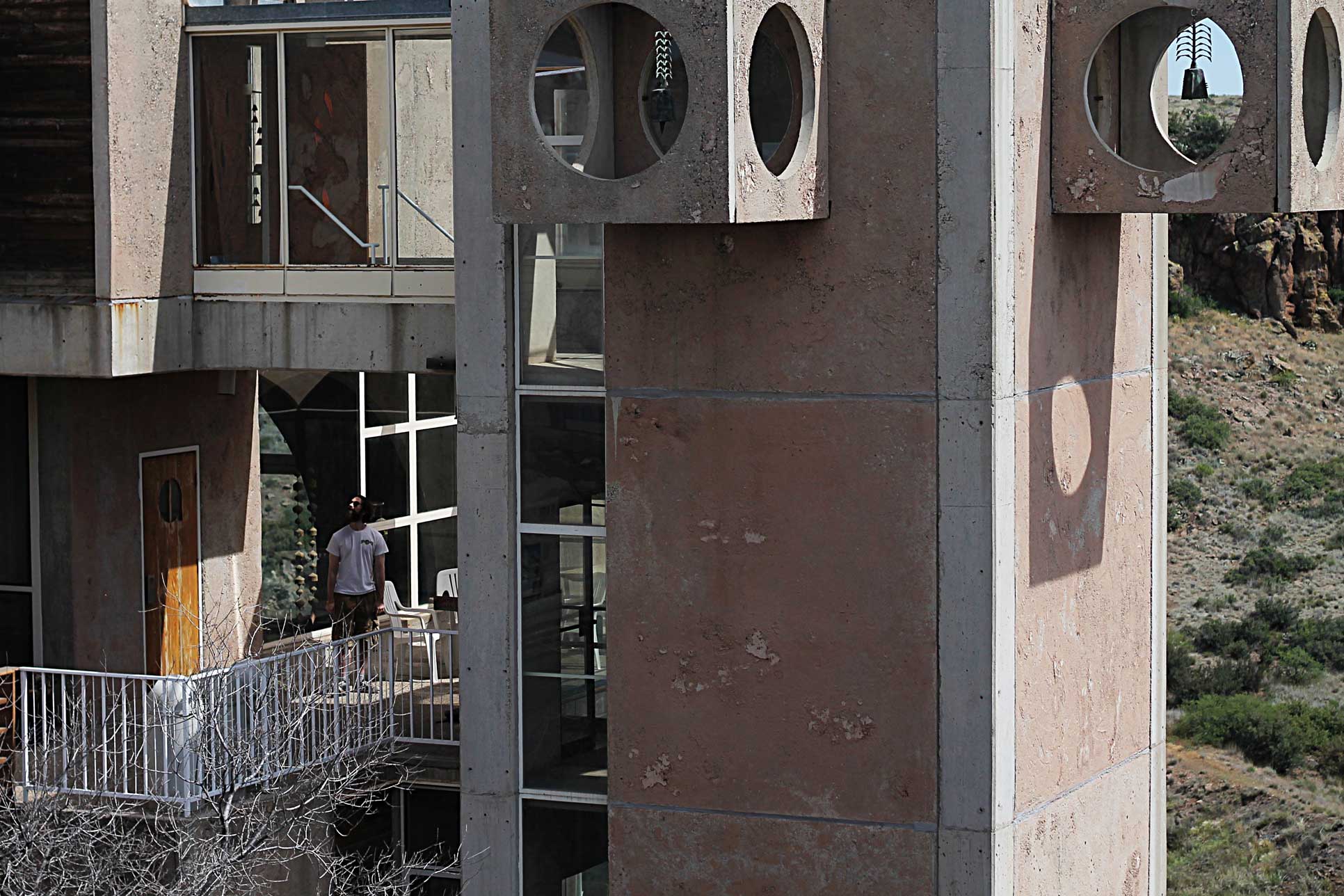
Multi-use and compact design building. (© Bibbi Abruzzini)
‘Building costs a lot of money, construction is slow. In my opinion even the area which we have imprinted is more than enough for an urban laboratory and to spread awareness on how to build sustainable cities,’ Frangiacomo said.
This development, which is still unfinished, currently includes an outdoor amphitheater, offices, residences, music and recreation room, the Soleri archives and the scenic guest quarters called the Sky Suite. The whole micro-city has been built by some 7,000 souls who have incessantly participated in construction works for more than 40 years.
Cities worldwide: play the piano
From the Lilypad Floating City the Le Corbusier’s Ville Radieuse, some of the most famous cities in history were never built. Arcosanti may have failed to become a thriving eco-city, but many ideas contained in it continue to influence architects and urban planners today.
Soleri, who died in 2013 at 93, transformed the way people imagine cities of the future. Humorously, he used to say, ‘I built the piano you should be the one playing it’. The music must change.
Some cities across the world have already shown that is it possible to combine sustainability with urbanization.
With a population of over five million people, Singapore is one of the most densely populated cities in the world – but it is also Asia’s greenest metropolis. As one of the most high-tech when it comes to green city planning, this city-state has gone through some radical transformations in recent decades. In fact, Singapore has one of the lowest carbon footprints of any major city in the world (around 2.7 tons of CO2 per capita). Recently, it introduced the Gardens By the Bay, a park of 18 high-tech artificial trees fitted with environmental technologies.
‘An advanced city is not a place where the poor move about in cars, rather it’s where even the rich use public transportation.’
On the other side of the planet, Copenhagen works with companies, universities and organisations in dedicated forums to develop and implement green growth. Its North Harbour project, for example, will include a ‘Green laboratory’ that will focus on eco-technologies, a model that can be transferred to other towns and cities. Like in 2012, Copenhagen is the top green city as ranked by the Global Green Economy Index (GGEI) survey of global experts, reinforcing the continued strength of the ‘Danish green brand’.
Enrique Peñalosa’s, mayor of Bogotá, Colombia turned to buses and bike lanes, showing that urban development done right produces a more egalitarian city. Probably his most well known quote is that ‘an advanced city is not a place where the poor move about in cars, rather it’s where even the rich use public transportation.’
These are just a couple of the many ideas that are being generated all across the globe aimed at changing how we live and build cities.
‘I subscribe to the notion that what’s developing now has an opportunity to develop intelligently,’ Cruz said. And if Arcosanti cannot be called a fully-fledged city per se, it is definitely injecting new ideas in the global platform for sustainable urban innovation.
Maak MO* mee mogelijk.
Word proMO* net als 2798 andere lezers en maak MO* mee mogelijk. Zo blijven al onze verhalen gratis online beschikbaar voor iédereen.
Meer verhalen
-
Report
-
Report
-
Report
-
Interview
-
Analysis
-
Report









 Oxfam België
Oxfam België Handicap International
Handicap International